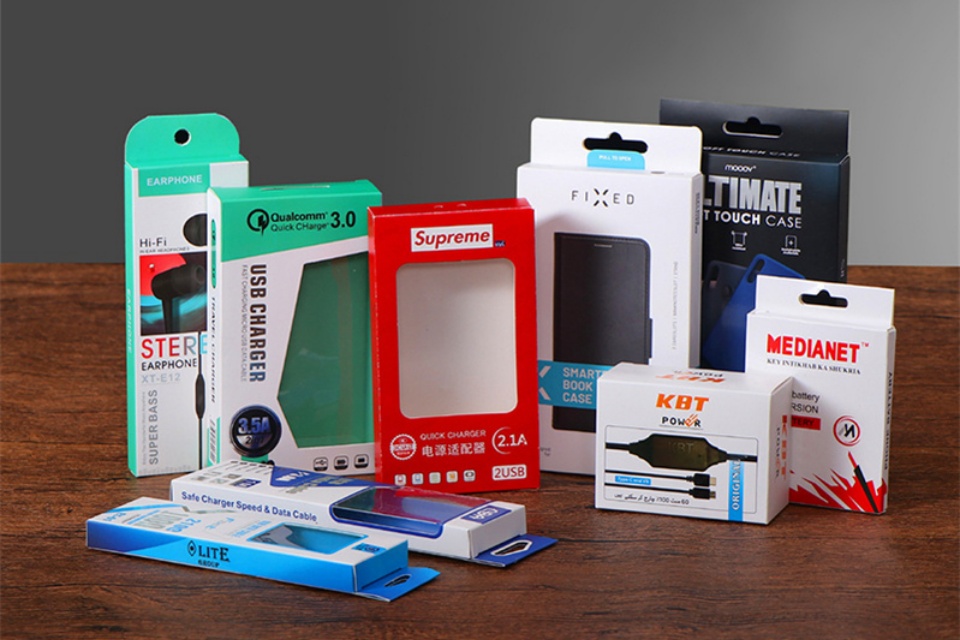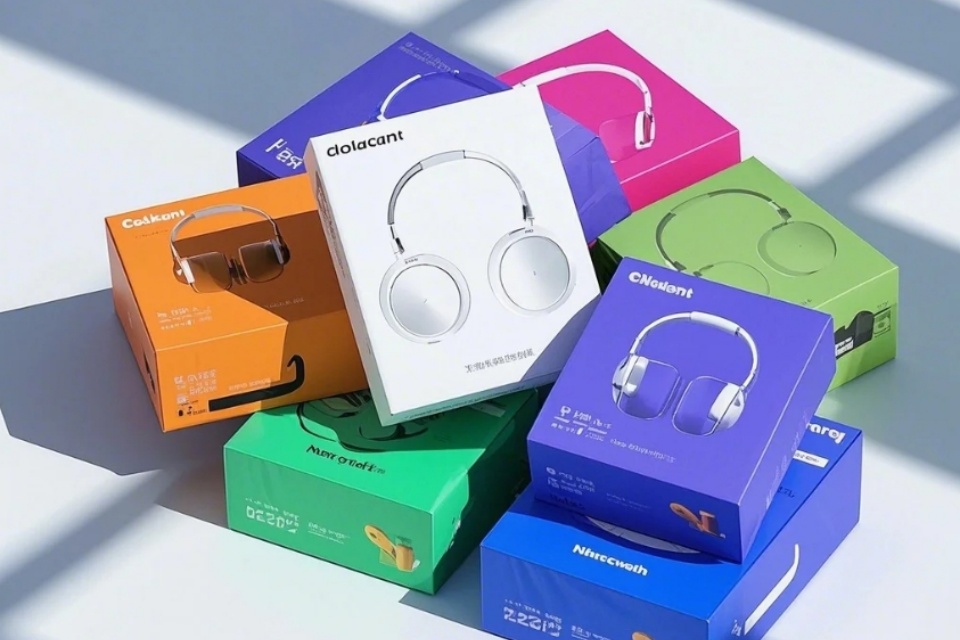Industry News
Case study- Apples packaging strategy and lessons learned
Case study- Apples packaging strategy and lessons learned
Summary
Apple Inc.'s packaging strategy is a hallmark of its brand identity, underscoring the company's commitment to innovation, quality, and consumer experience. Renowned for its meticulous attention to detail, Apple has turned packaging into an art form, where every box and component is designed to enhance the unboxing experience and reinforce brand values. This approach not only captivates consumers but also establishes a deeper emotional connection, making packaging an integral aspect of Apple's overall marketing strategy and product presentation.
Notably, Apple's packaging philosophy is rooted in the belief articulated by co-founder Steve Jobs that excellence extends to every facet of a product, including aspects not visible to consumers. This has led to a minimalist design ethos that combines functionality with aesthetic appeal, creating an immediate sense of sophistication and quality for customers upon receiving their products. The company's strategic use of color, typography, and imagery engages consumers emotionally, while also influencing purchasing behavior, making Apple's packaging a key differentiator in a saturated market.
In recent years, sustainability has emerged as a prominent focus within Apple's packaging strategy. The company has committed to using recycled and biodegradable materials, aligning its practices with growing consumer demand for environmentally responsible products. Additionally, Apple proactively adapts to emerging regulations promoting sustainable packaging, reinforcing its position as a leader in both innovation and corporate responsibility.
Lessons learned from Apple's approach reveal important insights applicable across various industries. The company emphasizes creating a memorable unboxing experience, the psychological impact of attractive packaging, and the significance of transparency in building consumer trust. As a result, Apple not only sets the standard in product packaging but also offers valuable guidance for brands seeking to enhance their own packaging strategies in today's competitive landscape.
Background
Apple Inc. is renowned not only for its innovative technology but also for its meticulous attention to detail in product packaging. This focus on packaging is a crucial component of the company's overall brand experience, embodying its commitment to quality, design, and user engagement. The philosophy behind Apple's packaging can be traced back to the "back of the fence" story shared by Steve Jobs, which emphasizes the importance of craftsmanship, even in areas that may not be visible to the consumer. Jobs believed that true dedication to perfection involves making every part of a product, including its packaging, aesthetically pleasing and functional.
Over the years, Apple's packaging design has evolved significantly, reflecting changing consumer preferences and advancements in material technology. The company understands the psychology of shopping, utilizing design principles that allow for quick information processing and emotional engagement. For instance, the packaging often features images that resonate with consumers, minimal text, and real-life scale imagery, creating an inviting unboxing experience.
Color choice also plays a vital role in Apple's packaging strategy, as specific hues can evoke different emotions and associations. For example, green may signify health and sustainability, while black and gold often denote luxury. Typography further enhances the branding, with carefully chosen fonts that convey the brand's personality and values, ensuring readability and trustworthiness.
The significance of Apple's packaging extends beyond mere aesthetics; it is an integral part of the product's identity. The packaging has become a collectible item in its own right, often enhancing the resale value of Apple products. Many users seek out original packaging to preserve the value of their devices, highlighting the unboxing experience as a key part of ownership. This attention to detail not only elevates the product itself but also establishes a deeper emotional connection with consumers, setting a gold standard in the packaging industry.
Packaging Strategy
Apple's packaging strategy is an integral component of its overall branding and product presentation, emphasizing design, functionality, and user experience. The company's approach can be broken down into several key elements.
Minimalist Design
Apple is renowned for its minimalist design philosophy, which is evident in its packaging. Each aspect of the packaging is purposeful and clutter-free, contributing to a sleek aesthetic that aligns with Apple's luxury branding. When customers receive their iPhone in its carefully curated box, they experience an immediate sense of sophistication and quality, reinforcing the brand's commitment to excellence.
Customization and Brand Identity
The ability to customize packaging is a strategic advantage for companies looking to enhance product presentation. Custom packaging enables brands to design every detail, from structure to materials, ensuring that the packaging reflects the brand's identity. This strategy not only elevates the product's perceived value but also creates a more engaging unboxing experience for consumers.
Cost-Effectiveness
While custom packaging can be associated with higher costs, Apple demonstrates that it is possible to achieve an impressive presentation without overspending. Many packaging companies offer affordable solutions that capture the essence of Apple's rigid box designs. By collaborating with experienced packaging designers, brands can develop cost-effective solutions that do not compromise on aesthetics.
Sustainability Considerations
Apple's packaging strategy also reflects an increasing emphasis on sustainability. As consumers become more environmentally conscious, the use of recycled and biodegradable materials in packaging design is gaining importance. Brands can opt for recycled cardboard or biodegradable plastics, aligning their packaging practices with eco-friendly values while maintaining a high-end appearance.
Emotional Engagement and Consumer Influence
Apple's packaging not only serves a functional purpose but also engages consumers on an emotional level. The design elements, such as color, typography, and imagery, are carefully selected to resonate with the target audience, influencing purchasing decisions. For instance, bold colors may evoke excitement, while sophisticated typography can suggest luxury and quality, effectively appealing to consumers' emotions and needs.
Differentiation in a Competitive Market
In saturated markets, unique packaging can be a crucial differentiator. Apple's distinct packaging design helps it stand out among competitors, making its products memorable and increasing the likelihood of consumer preference. The strategic use of limited edition packaging or seasonal designs can create a sense of urgency, driving impulse purchases and enhancing overall sales.
By integrating these elements into its packaging strategy, Apple not only reinforces its brand identity but also sets a high standard in product presentation, offering valuable lessons for other companies looking to enhance their packaging approaches.
Implementation
Sustainability Integration
The implementation of Apple's packaging strategy involves a comprehensive approach to sustainability that aligns with broader industry trends and consumer expectations. As stakeholders increasingly demand sustainable practices, Apple has adopted mono-material designs that facilitate recycling, moving from pilot initiatives to standard practices in their supply chain. This strategic shift reflects a growing recognition of the need for packaging solutions that balance performance with environmental impact.
Regulatory Compliance
Apple has also proactively engaged with emerging regulations aimed at promoting circularity in packaging. For instance, the company has adjusted its packaging designs in response to Extended Producer Responsibility (EPR) laws and other regulations being enacted globally, particularly in the European Union where ambitious recycling mandates are in place. By anticipating regulatory changes, Apple positions itself as a leader in sustainability, ensuring compliance while meeting consumer demands for eco-friendly products.
Packaging Design and Consumer Engagement
Key to Apple's strategy is the emphasis on packaging design that enhances user experience while communicating the brand's commitment to sustainability. Packaging design plays a crucial role in influencing consumer purchasing decisions; studies show that 72% of consumers consider packaging design significant when choosing products. Apple's packaging not only protects its products but also serves as a touchpoint for brand engagement, using simple, elegant designs that resonate with its customer base.
Continuous Evaluation and Adaptation
To maintain its competitive edge, Apple continuously evaluates consumer responses to its packaging changes through feedback mechanisms such as surveys and direct customer engagement. This iterative process allows Apple to adapt its packaging strategies in line with consumer preferences, ensuring that changes are well received and aligned with market expectations. Additionally, the company actively tracks the environmental impact of its packaging choices throughout the product lifecycle, from material sourcing to end-of-life disposal.
Strategic Partnerships
In implementing its packaging strategy, Apple collaborates with suppliers and partners who share its sustainability vision. These partnerships are essential for identifying and utilizing sustainable materials, as well as for optimizing logistics and delivery systems to minimize environmental impact. As a result, Apple has not only improved its packaging efficiency but has also set benchmarks within the industry for sustainable practices.
Through these multifaceted strategies, Apple continues to refine its packaging implementation, ensuring that it meets both regulatory standards and consumer expectations in a rapidly evolving market.
Lessons Learned
Apple's packaging strategy provides valuable insights that can be applied across various industries. One of the key lessons is the importance of creating a cohesive and memorable unboxing experience. This is achieved through the use of materials, colors, and designs that align with the brand's identity, which helps enhance consumer excitement and anticipation as they open the package. Incorporating elements that build suspense, such as tissue paper or protective coverings, can further elevate this experience.
Another significant takeaway is the psychological impact of packaging design on consumer behavior. Visual and tactile elements play a critical role in capturing attention and prompting purchases. Research indicates that attractive packaging can lead to impulsive buying decisions, while consistent design strengthens brand recognition and loyalty. Therefore, brands should prioritize not only the aesthetic appeal of their packaging but also ensure that it communicates the product's benefits effectively.
Sustainability has also become a focal point in modern packaging strategies. As nearly half of consumers believe that product packaging should reflect a brand's commitment to social and environmental responsibility, communicating sustainability initiatives can foster consumer trust and loyalty. Brands that transparently share their environmental efforts and the benefits of their materials can connect more deeply with eco-conscious consumers.
Furthermore, emotional connections fostered through packaging design can significantly influence brand loyalty. Elements such as color, shape, and graphics can evoke specific emotions, leading to memorable experiences that encourage repeat purchases and social sharing. For instance, warm colors might evoke excitement, while cooler tones can foster trust, thereby enhancing the overall consumer experience.
Finally, the principle of transparency in packaging is essential. Clear packaging that showcases the product can build trust, while well-placed labels can empower consumers to make informed decisions. This transparency not only enhances the perception of quality but also positions the brand as honest and ethical, thereby improving customer loyalty and creating a competitive advantage.
Categories
Latest News
Contact Us
Contact: Aaron Lee
Phone: +8613570866244
Tel: +8675529490260
Add: Li Songlang 2nd Industrial Zone,No.18,FengTang Rd,Guangming New District


